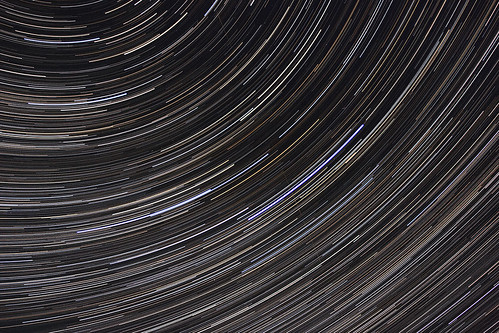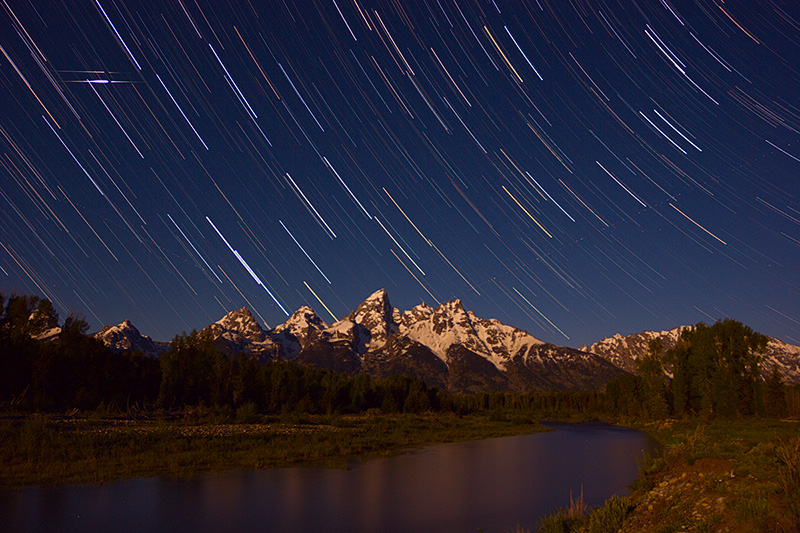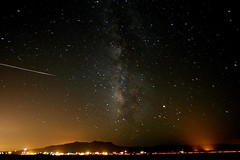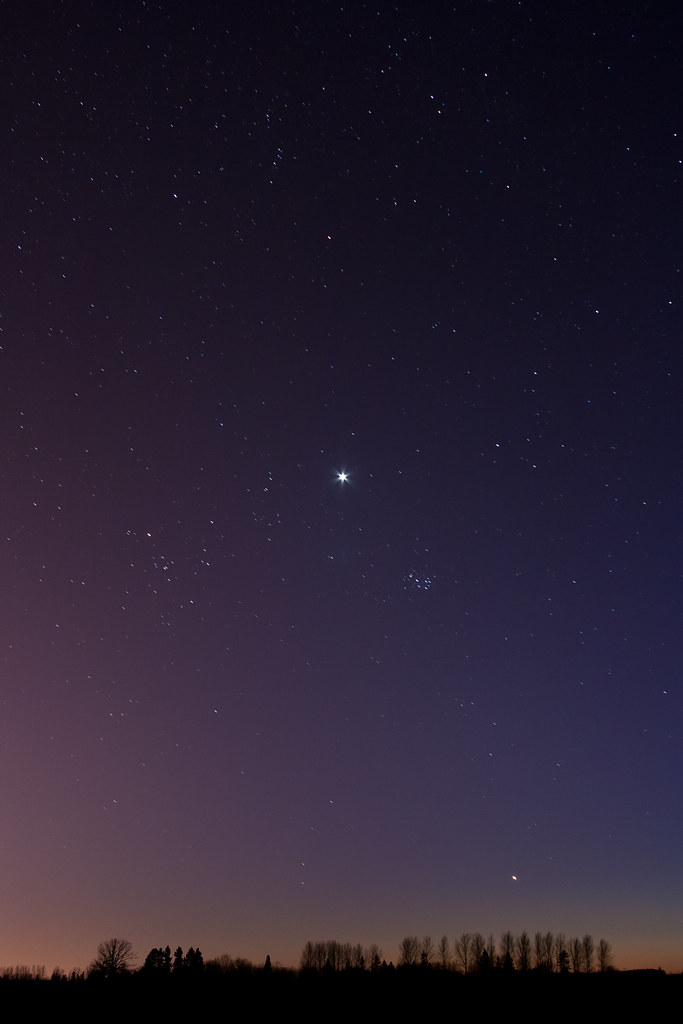|
 596 images, 10s exposures. It's sister image (started about a minute after this one) is 597. I will probably post it later, as it actually has a decent Perseid in it, as opposed to the very short-lived ones that are only visible in this one under close inspection at near maximum resolution. Stacked with a Photoshop action, same as my one from the Tetons last year.  The two streaks in the top left are Iridium flares. There are also two jets visible.
|
|
|
|

|
| # ¿ Apr 30, 2024 06:04 |
|
For the first: f/4; ISO800. For the Tetons, I don't remember. I think they were 15s exposures, probably also at f/4 and ISO800.
|
|
|
|
Here's the "sequel" to the star trails above: 597 10-second exposures. One Perseid on the right side, and a couple satellites on the left.
|
|
|
|
Instrumedley posted:It's not possible to take a shot of a city and the Milky Way, is it? That'd look amazing. It is (not my shot):  From the 2007 Perseid meteor shower. My shot from the same year has some pretty awful light pollution, but no visible city. (2010 Perseids are coming up soon, folks.) Four Banger: There are a couple focusing tricks when wanting to shoot landscape (or general 'sky stuff') at night. Preset the focus on some distant object--like the horizon--when it is light out, then don't touch the focusing ring. If the focus does change, and it is now dark, the moon (if it is up) is your best bet. If the moon isn't up, try the horizon again. Lastly, use a flashlight and the lens' distance scale to manually focus at infinity, or else just blindly crank the focus all the way to the infinity stop. I will typically back it off from the infinity stop a nudge, but that's primarily because lenses shouldn't even have to hit the stop to achieve acceptable infinity focus.
|
|
|
|
Saw a few Perseids between bouts of lightning and ... more lightning. Andromeda is in there, too.
|
|
|
|
xzzy posted:What about the milky way? I read a blog post by some natgeo guy who suggested something ridiculous like 90 seconds at f/2.8 and iso 3200. Barn doors?
|
|
|
|
Hilroy posted:
This is really well-executed--gorgeous. The trees are a really solid foreground, with the Pleiades and Venus (?) centrally-located, and the string of brighter stars along the top framing the horizon hues. Very nice.
|
|
|
|

|
| # ¿ Apr 30, 2024 06:04 |
|
Falco posted:Thanks for the advice. I was having a tough time with live view because of the no moon that night. I just need to find a planet or something bright to look at and try it again. My method for star trails has been to focus on the horizon during sunset/daylight, switch to manual focus, then not touch anything until shooting time. This typically works pretty well, because once the landscape light has peaked, there's still ample light for infinity at the horizon.
|
|
|





